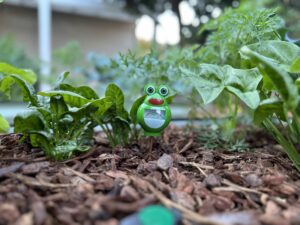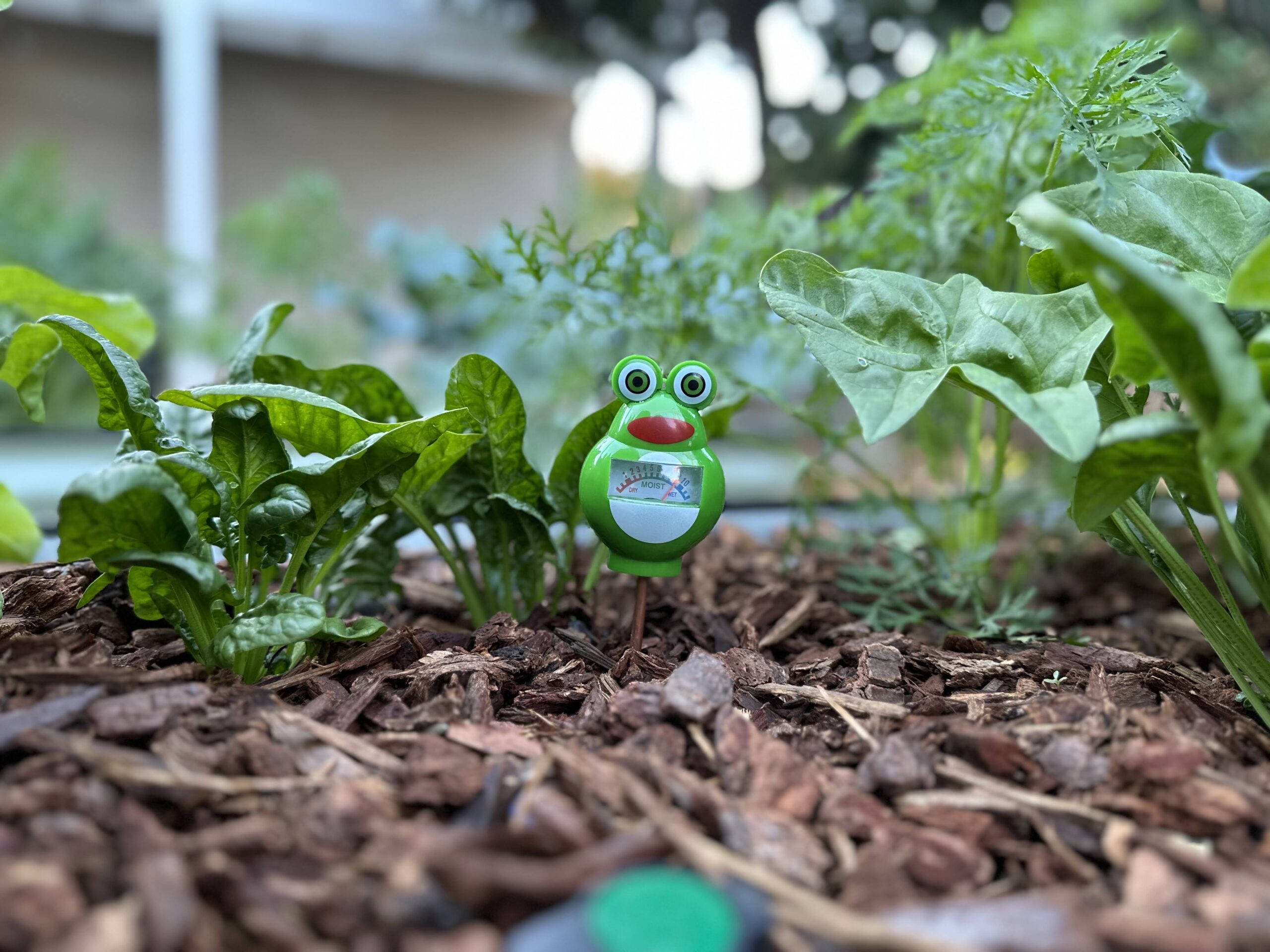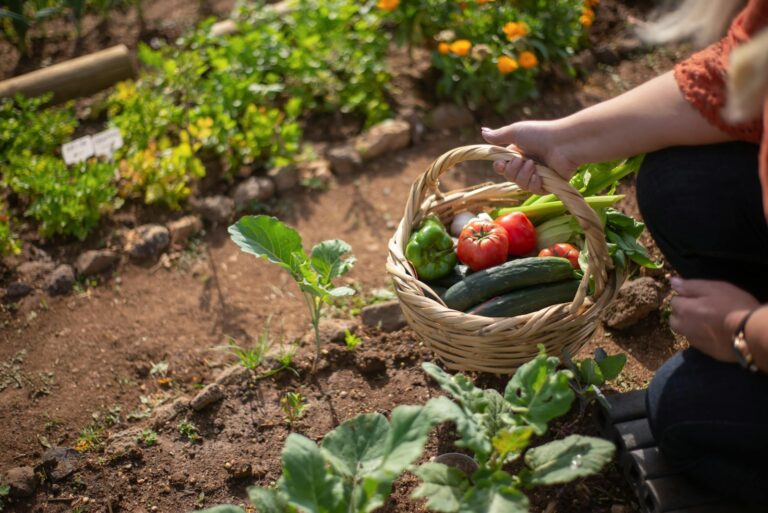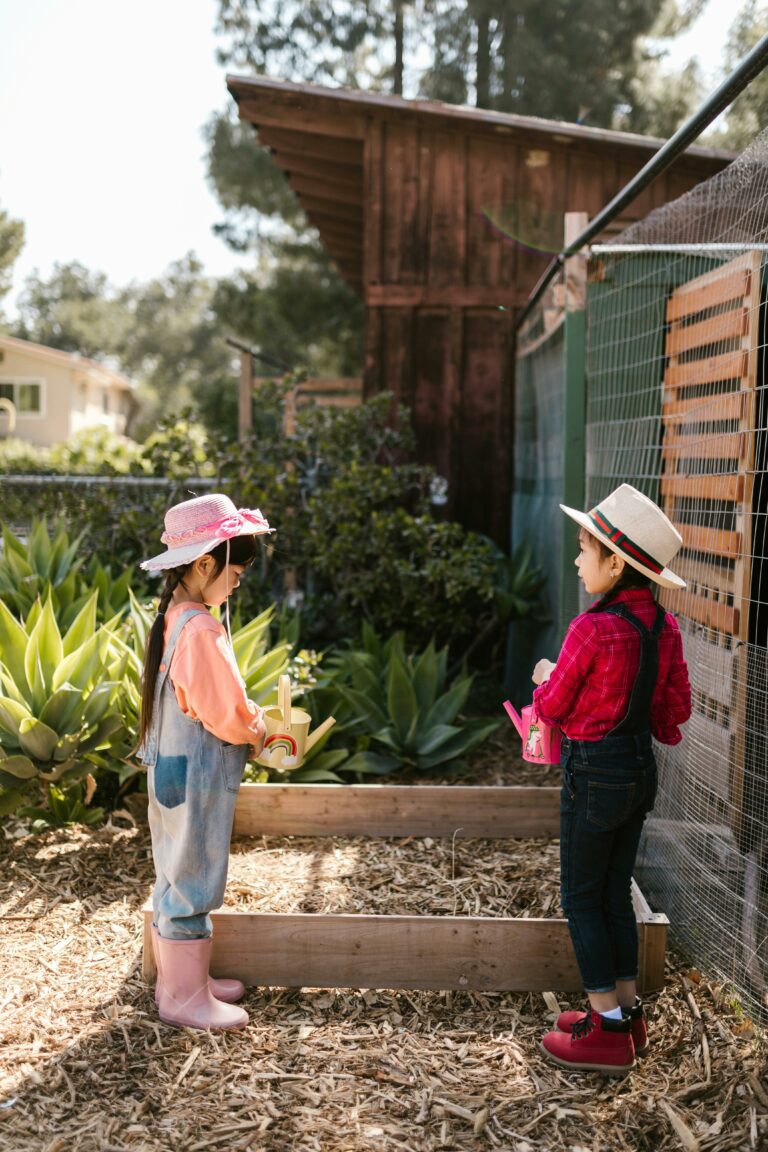Gardening to Reconnect With Nature
After my daughter was born and I was back to working full time, it became much harder to plan ahead and coordinate mine and my husband’s schedules to go hiking. I wanted and needed to get outside for my mental health but struggled to find the time and a way to do so. I found gardening as a way to reconnect with nature.
We just moved into our new home and I was learning how to balance keeping up with housework, a baby, two dogs, and full time work with a long commute. Adjusting to life as a new mom and with still little sleep, I did not have the mental bandwidth to plan more things, including finding a suitable hike that I could handle postpartum.
I started gardening as a way to get outside. To reconnect with nature, in my own backyard without having to travel far. I also wanted to learn how to grow my own food. I was inspired by all the beautiful home garden posts on social media. I was binging through a lot of gardening content from podcasts, to youtube videos, to instagram. I learned that we lived in Zone 9b which was the first step in figuring out what plants to grow when.
We bought our first vegetable seedlings in Spring 2022. They were a cherry tomato, a sungold tomato, a jalapeno, and an orange bell pepper. We bought four 10 inch pots from the same garden center, a foldable rearrangeable trellis, potting mix, and an organic fertilizer. With childlike wonder and excitment, we transplanted the seedlings and hoped for the best.
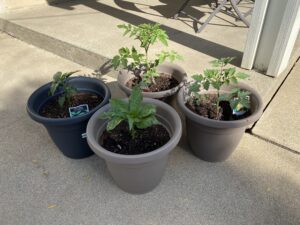
I knew nothing about soil health. Nothing about feeding the plant. Nothing about pollinators. Nothing about watering schedules. Nothing. I watered the plants nearly everyday and when something did not look right, googled to find a solution.
“Why are my tomato leaves turning yellow?” Answer: too much watering, too little watering, too much nutrients, too little nutrients. Not an entirely helpful answer, Google. I settled on, maybe I need to actually feed the plant once in a while and purchased sea kelp as my liquid organic fertilizer.
“Why are my tomato flowers not becoming tomatoes?” Answer: the plant needs to be pollinated. We had no other flowers nearby to attract the birds and the bees and only later did I learn that tomatoes are self-pollinating, all I needed to do was to shake the plant a little.
“Why are my peppers dying before they finish growing?” Answer: something called blossom end rot. I needed to give the plant more calcium somehow.
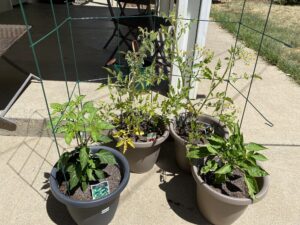
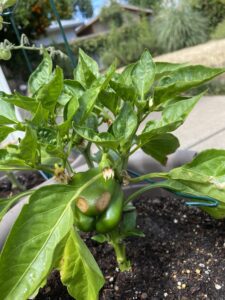
Every time something happened to the plants that I did not understand, I turned to google. I read a lot. At the end of the season, our four little transplants had a very small yield. We were graced with only a small handful of tomatoes that didn’t even make it inside the house. It was a taste of the sweetest yummiest tomatoes that I had had at the time. Prior to growing tomatoes myself, I didn’t even like tomatoes. We got zero bell peppers, all of which were subject to said blossom end rot. The jalapeno plant was the most successful and produced more tiny vegetables than we even knew what to do with!
We made a lot of mistakes this first go around. I learned a lot from just these four plants. The biggest of which was that tomatoes needed a lot of space to grow. 10 inch pots are just a little too small for tomatoes and peppers. Small pots dry out quickly which is not a good thing when the summers can be stretches of triple digit weather.
What this little garden experiment did do was bring me outside. In a time when I needed to get outside to feel sane amidst the chaos of day to day living, gardening helped me do that. I had to in order to know what to do with my plants. I frequently ran my hands through the leaves, touched the soil, pruned the branches. Each time, I learned a little more about how to grow our food.
In the Fall of 2022, we redid our backyard and had metal raised beds and an irrigation system installed. We tried again with fall vegetables and a little more variety, broccoli, carrots, kale, spinach, and beats. This time, we were much more successful and actually managed to have vegetables directly from the garden in our dinners and shared some with some friends.
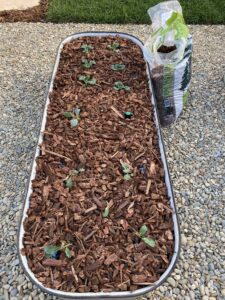
Not everyone has the luxury for metal raised beds or an irrigation system but what I’m also learning is that there are a lot of ways to grow food. I’ve seen folks grow in plastic storage bins, build raised beds out of 2 x 8 planks and planter wall blocks, and grow plenty of food on balconies and indoors.
Asides from learning about the growth environment needed for that plant, the nutrients, the soil, its sun and water needs, gardening also had some other benefits.
In a world that is full of hustle culture, being on the go, productivity, and instant gratification, gardening is none of that. Instead, it asks you, can you slow down enough to watch this plant grow, to give it what it needs, to nurture it. It allows me to be mindful doing the simple things, like pruning, weeding, and hand watering. It teaches me to be observant. It teaches me patience. You can’t rush growing a plant. It will grow on its own timeline. In fact, trying to rush it by giving it too much water or sun or nutrients will instead kill it.
In my now few years of gardening, I have had some wins including growing tomatoes from seed (now we have so many tomatoes that we can’t keep up with eating them), turning over a raised bed from one season to the next, and added zucchini, cucamelon, shishito and pepperoncini peppers, strawberries, cilantro, potatoes, rosemary, thyme, basil to the list of things grown. Now, not all of them have been successful but I am trying and constantly learning. I have grand plans to convert our weeded out front yard into a permaculture space but that’s another story.
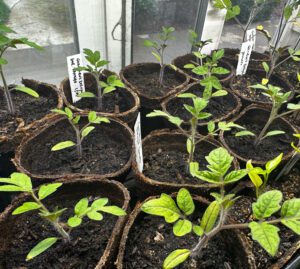
So, bring nature to you. Will you start your own garden? What vegetable have you always wanted to grow? Is there something you can start growing on your back patio, balcony, or even windowsill?
Give it a try.
